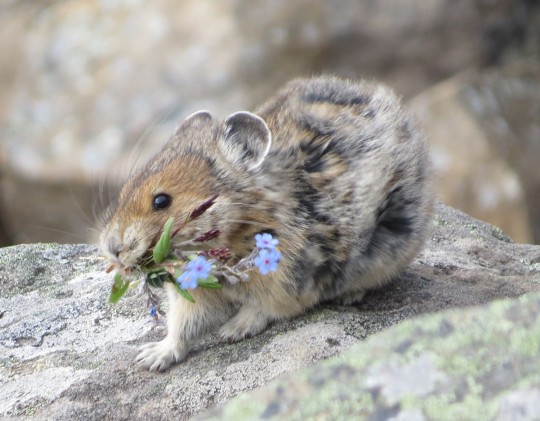#pikanny
Note
What do u think Sunny's fursona would be? Obviously otacon is ottercon the otter and snake is Dogvid the wolf dog but what would sunny be....
I feel like I'm bad at assigning animals cause I'm just gonna make a decision based on what I think is cute and not anything else
BUT I'd say a Pika. They're related to rabbits but have round ears like mice. But MOST IMPORTANTLY ottercon and dogvid having a baby whoose animal name sounds like ur about to say pikachuu

#unfortunately theres no nice sounding way yo combine sunny and pika#pikanny#sunka#?#feel free to disagree with me
3 notes
·
View notes
Text

#finishedbooks The People Could Fly by Virginia Hamilton. It was reading Morrison's "Song of Solomon" and its motif of black flight that I just found the idea so beautiful. The book on the underground railroad quilt codes referenced this and the library actually had it. I didn't realize it was a children's book, but is done in manner of having an adult introduction presenting each story in a manner that lends themselves to being read out loud (as the oral tradition demanded) ending with a paragraph again for adults contextualizing the story. In all there were just under 30 stories in over 130 pages with illustrations. These folktales in general were a creative way for an oppressed people to express their fears and hopes to one another and dealt in metaphor with a good number of them featuring animals in the tradition of past folktales I posted about from the Lakota tales featuring the fox trickster to Yoroba tales in Africa with Anasi the spider trickster. The first story features a proud lion that the other animals fear, and ask the bear and rabbit (the latter if which a reappearing hip to the ways character) to help. The two decide to introduce the proud lion to a man who immediately shoots at the lion teaching him the ways of man or really the relationship of themselves to the slaveowner to which the young audience it was intended. Tar-baby appears here that although at a certain point became associated with a racist depiction of pikannies and became a slur, was a story that carried a metaphor of a problematic situation that is only aggravated by additional involvement with it. A good number of the stories were originally told in a Gullah dialect something that the book modifies a bit to be more readable, because after one story they give an accurate Gullah original text and it's clear to see why they modified it. Most of the people from the South Carolina coast nowadays are thought to have come from the Gola tribes between Liberia and Serria Leone, but more traditionally were thought to come from Angola among whom were thought to have brought special powers with them culminating in the final story, "The People Could Fly." The story begins with an old legend in Africa that some people knew magic and could take flight like birds. Many of them captured for slavery had to shed their wings due to the overcrowded ships that brought them here...and no longer breathing the African air forgot how to fly. The story skips to a young mother with her child on her back picking cotton to the point of exhaustion while her hungry baby cries. The master tells her to shut the thing up and whips the baby till an older slave comes over and says, "it's time" whispering the magic words (actually Bantu) "kum yali, kum buba tambe" and her and her baby awkward at first begin to fly much to the surprise/dismay of the slave master. Over the days he whispers the words to more to fly before he is heard and has to take flight himself living those slaves who could not fly behind. They say that those children of the ones who could not fly told their children ending the story, "And now me, I have told it to you." Throughout a lot of our culture their are accounts of flight usually in combination of tales of enslaved people escaping or a motif of wishful fulfillment. In another variant of the story a magic hoe is left in the field after all the slaves have flown away that is often attributed to Angolan slaves who again were thought by others to have special powers. More than the other stories, the suffering evident in this story making the motif a powerful testament to the millions of slaves who never had the opportunity to "fly" away. They remained slaves as did their children, so the story was first told and retold by those who had only their imaginations to set them free.
0 notes
Link
Donate/ Share, Support Indigenous Film makers and Indigenous cultures!
29 notes
·
View notes
Link
My friend Lauren is making a short adventure film that centers around the Pikanni people, post-apocalypse. He’s committed to making this the real deal (they will be speaking the language!), so please show him some support and help get our stories out there!
7 notes
·
View notes